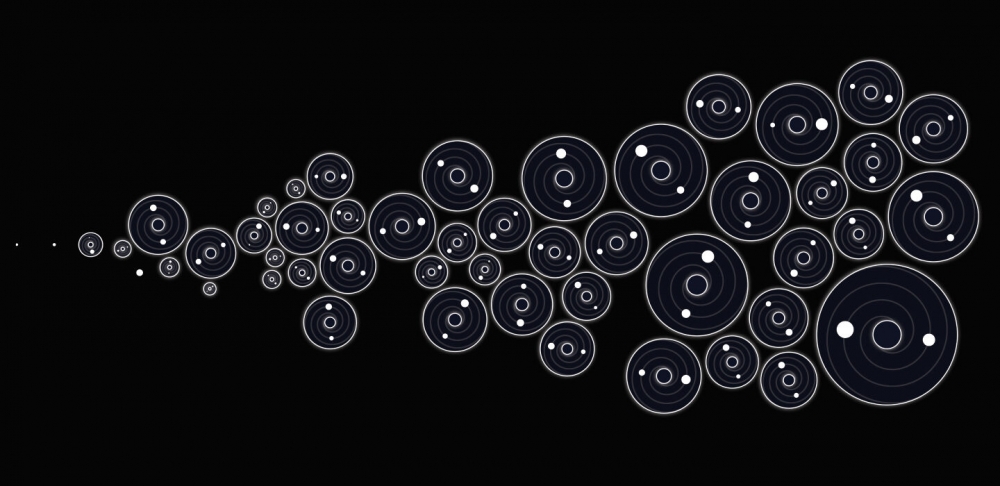Explore every gravitational wave event spotted so far

Gravitational waves, produced when behemoths like black holes and neutron stars spiral inward and merge, have been spotted 50 times (each event represented with a large circle above). NADIEH BREMER/VISUALCINNAMON.COM
By Emily Conover and Nadieh Bremer
Fifty events reveal the similarities and differences in these cosmic smashups
Throughout the universe, violent collisions of cosmic beasts such as black holes wrench the fabric of spacetime, producing ripples called gravitational waves. For most of history, humans have been oblivious to those celestial rumbles. Today, we’ve detected scores of them.
The first came in 2015, when scientists with the Advanced Laser Interferometer Gravitational-Wave Observatory, or LIGO, spotted gravitational waves spawned from the merger of two black holes. That event rattled the bones of the cosmos — shaking the underlying structure of space and time. The detection also stirred up astronomy, providing a new way to observe the universe, and verified a prediction of Albert Einstein’s general theory of relativity (SN: 2/11/16).
The first came in 2015, when scientists with the Advanced Laser Interferometer Gravitational-Wave Observatory, or LIGO, spotted gravitational waves spawned from the merger of two black holes. That event rattled the bones of the cosmos — shaking the underlying structure of space and time. The detection also stirred up astronomy, providing a new way to observe the universe, and verified a prediction of Albert Einstein’s general theory of relativity (SN: 2/11/16).
But like a lone ripple in a vast sea, a single detection can tell scientists only so much. Now, LIGO and its partner observatory Advanced Virgo have collected 50 sets of gravitational waves. Most of these spacetime ripples resulted from two black holes spiraling inward before colliding. Some arose from collisions of dense stellar corpses called neutron stars. Two collisions involve celestial bodies that can’t be confidently identified, hinting that scientists may have spotted the first merger of a neutron star with a black hole (SN: 6/23/20).
See full text